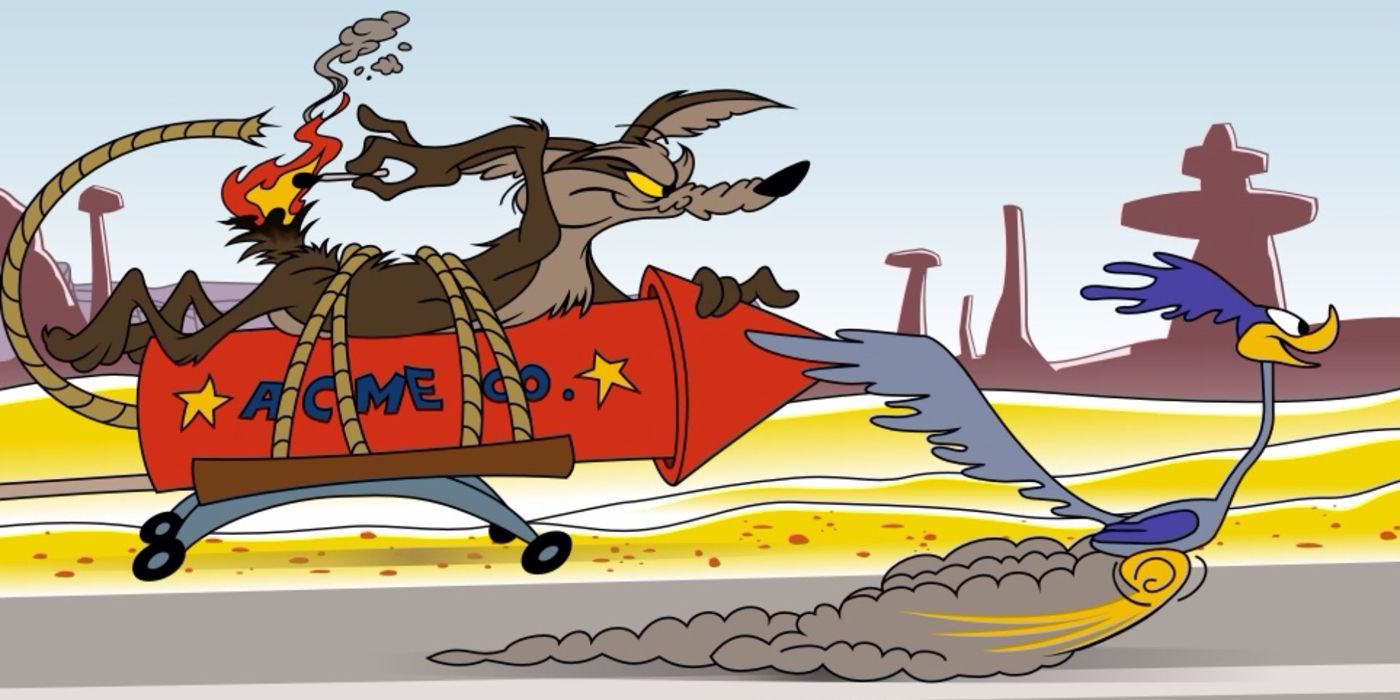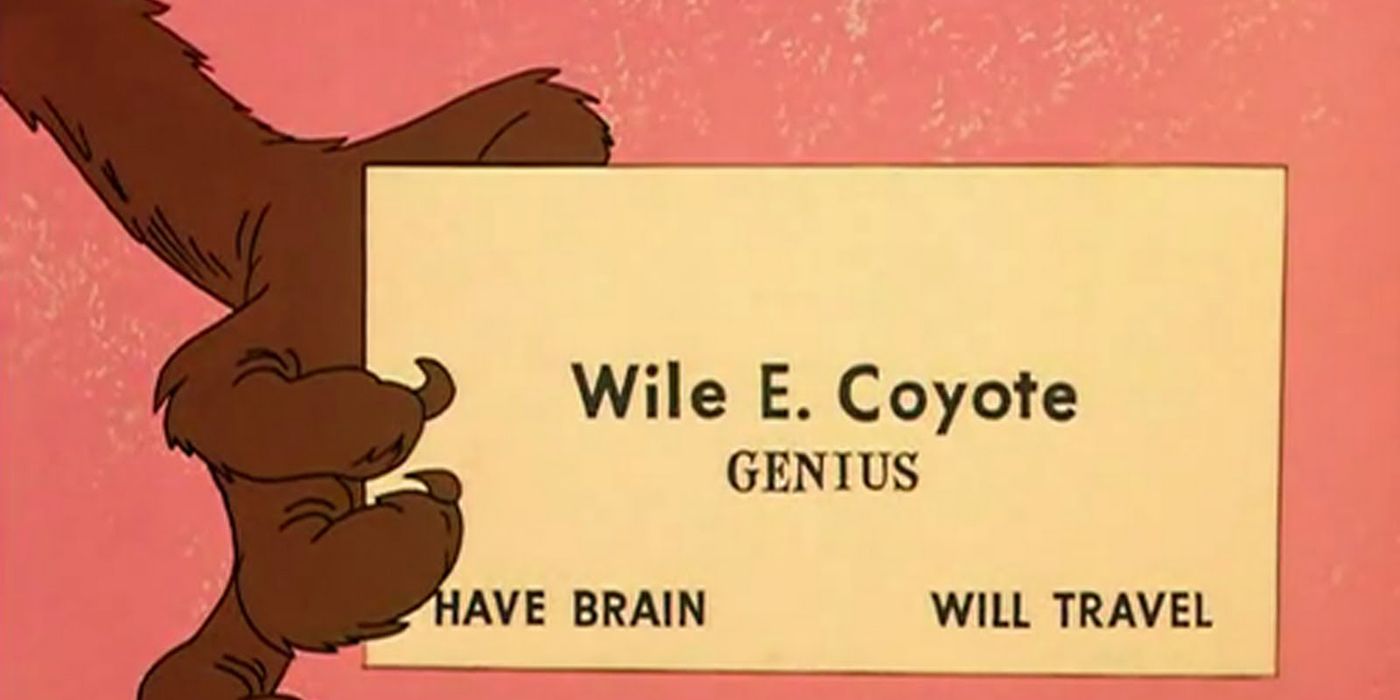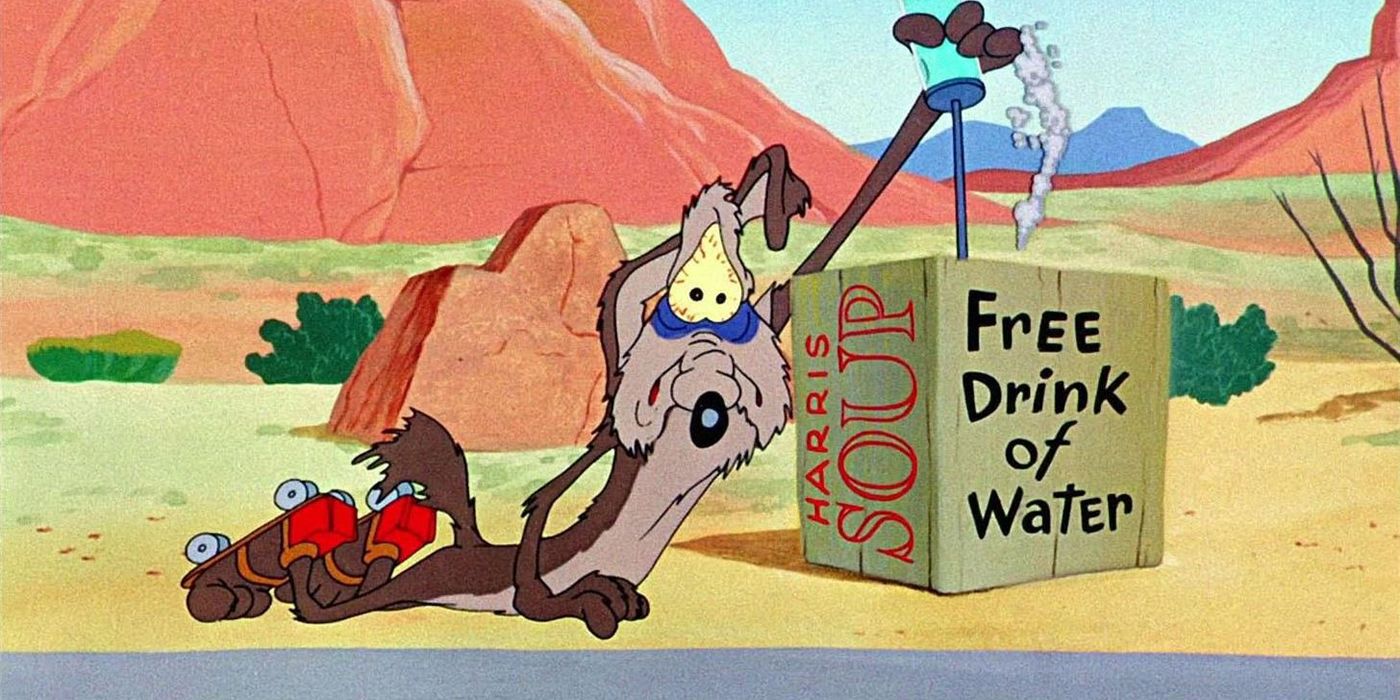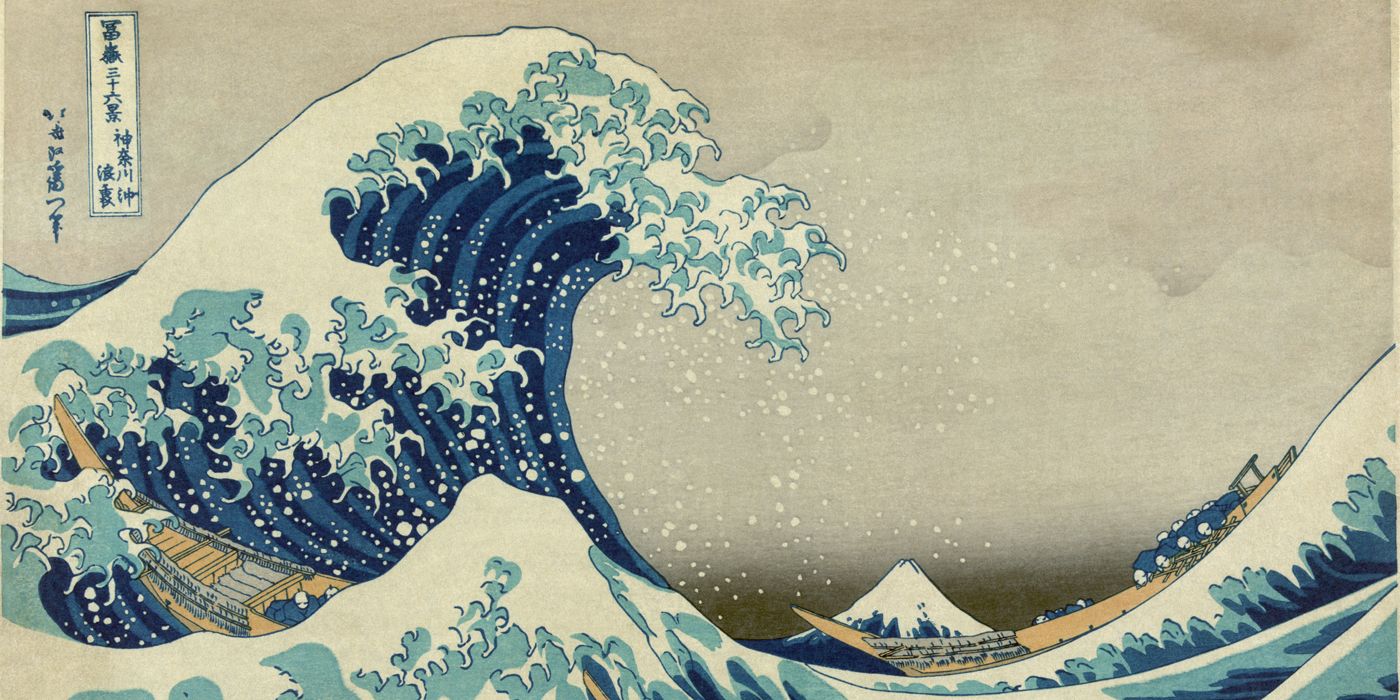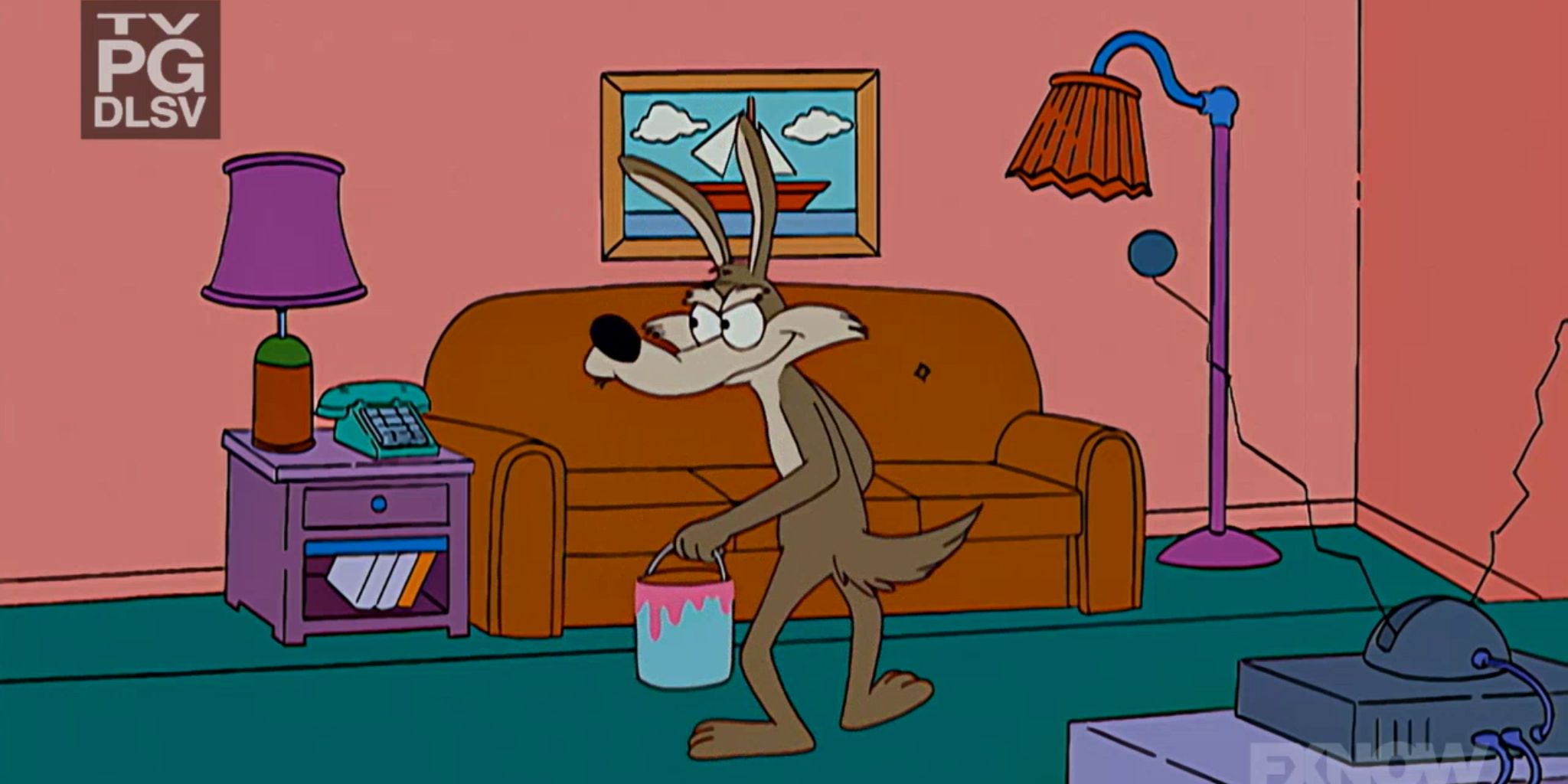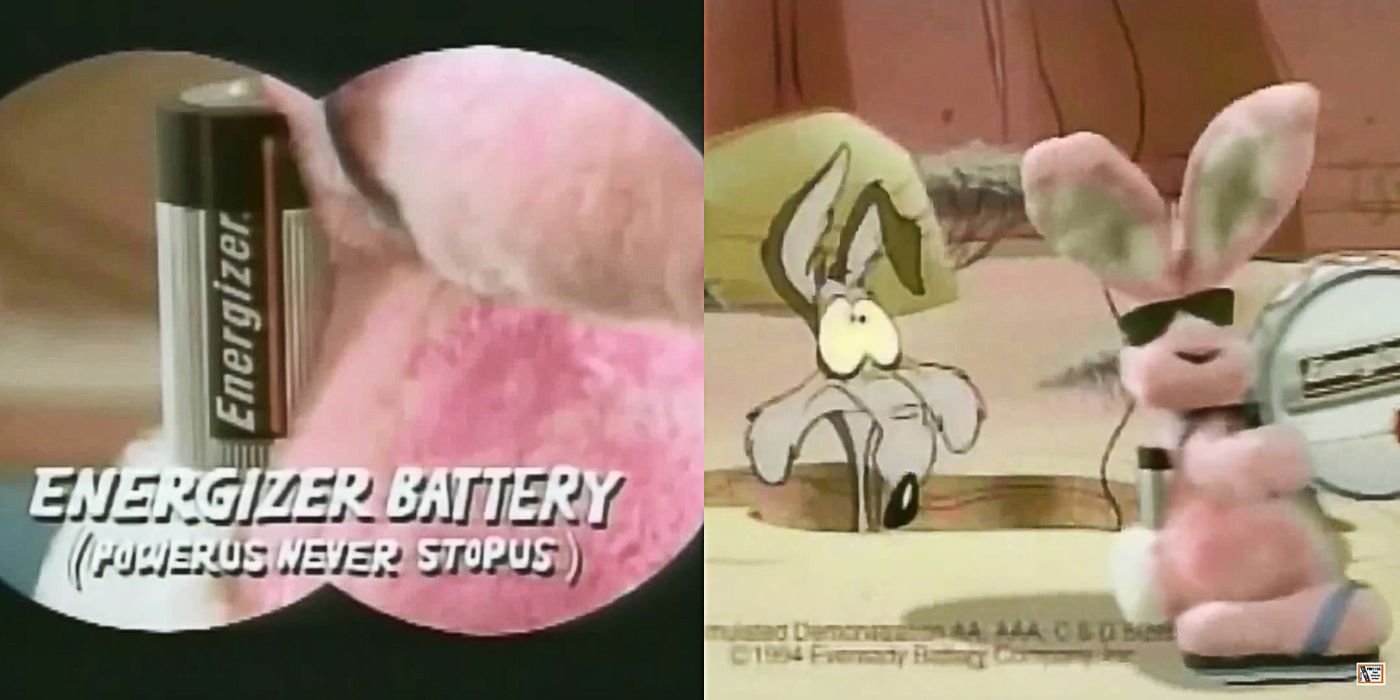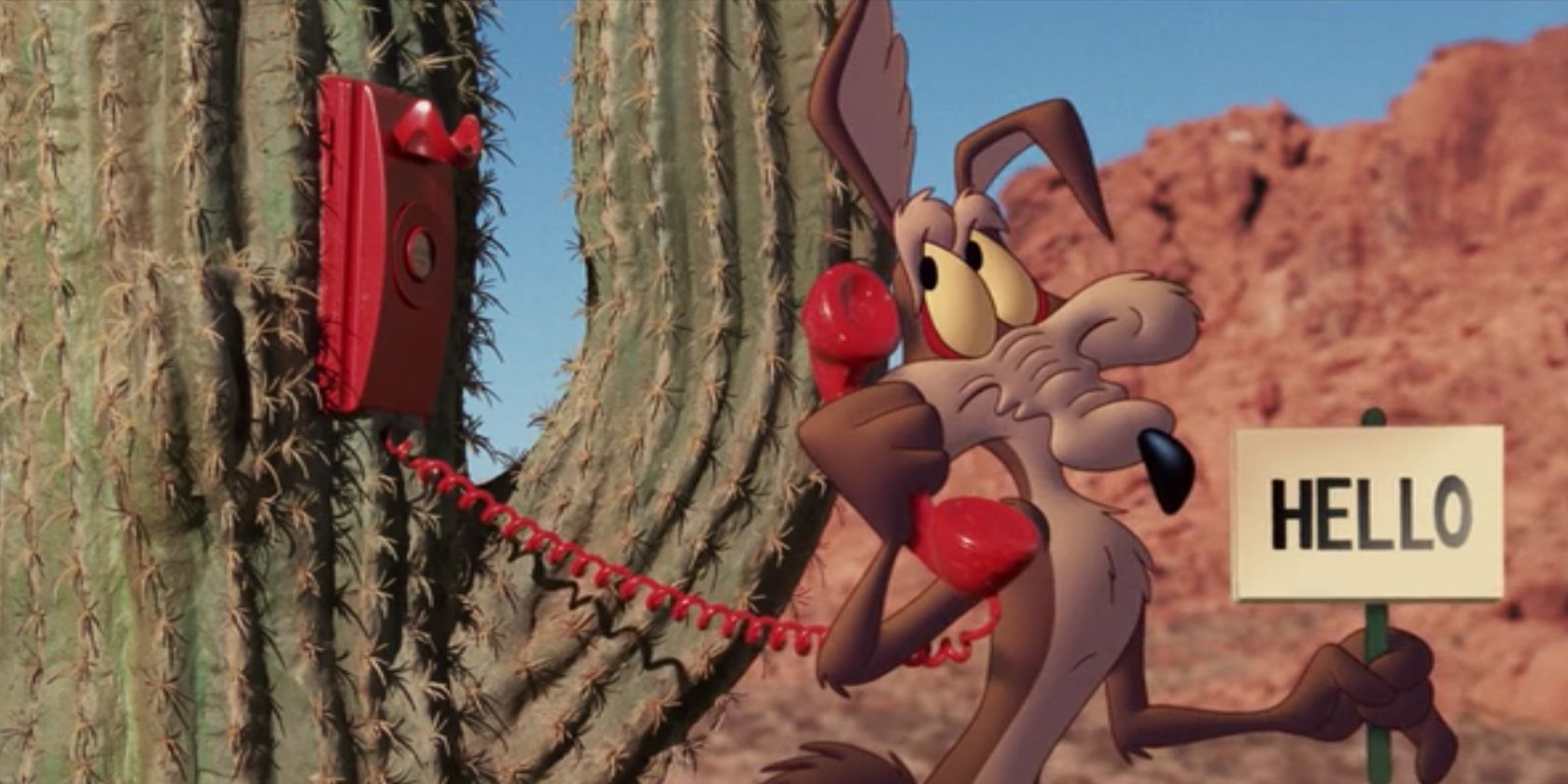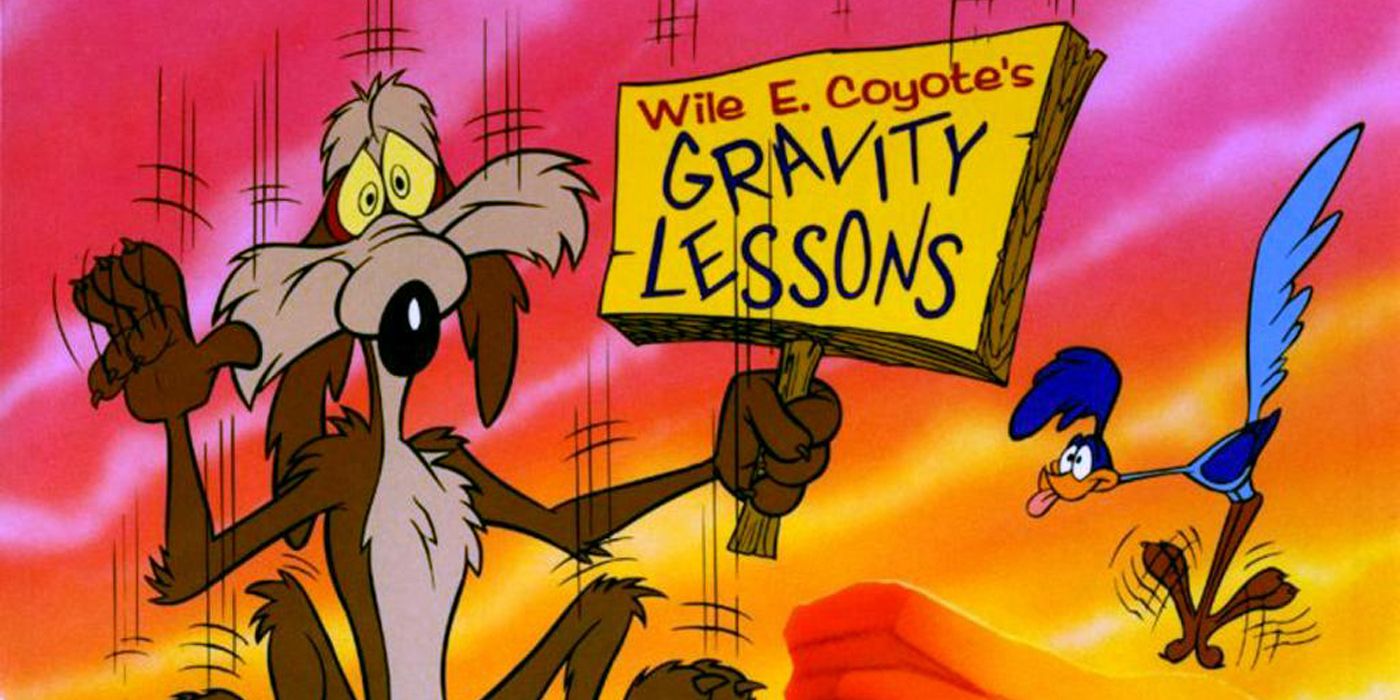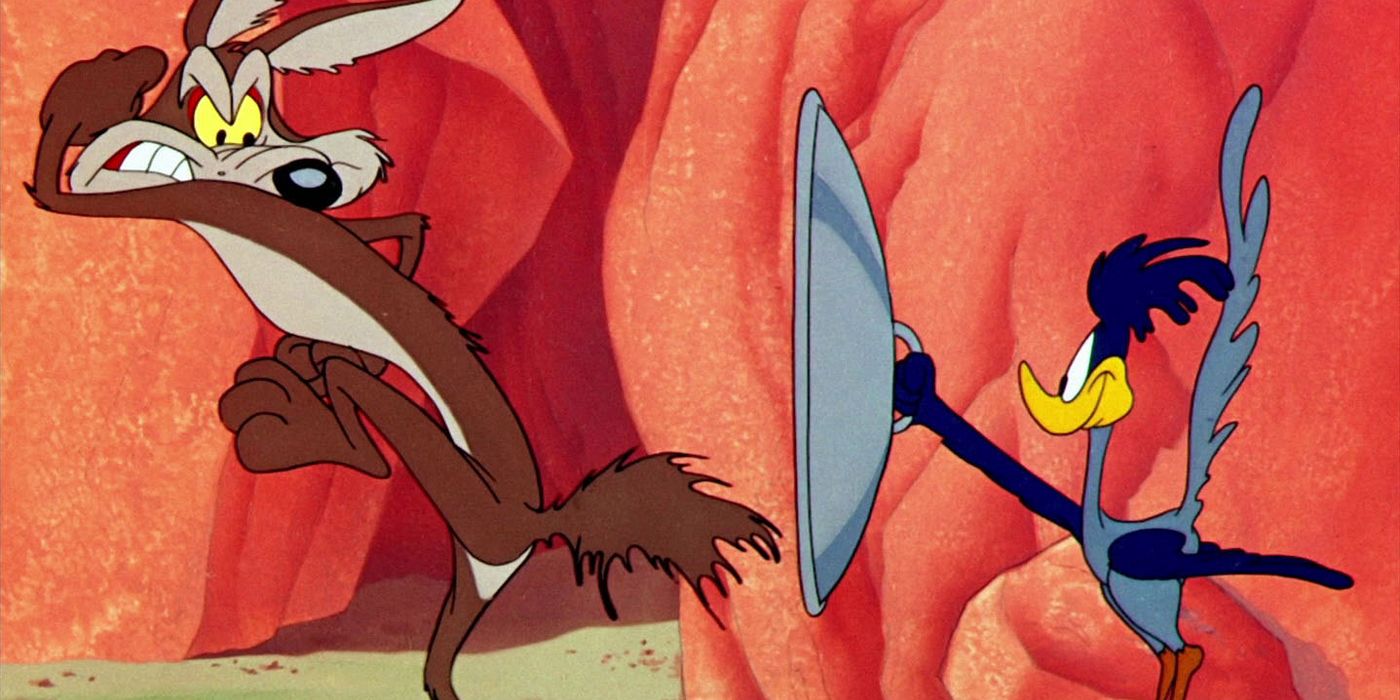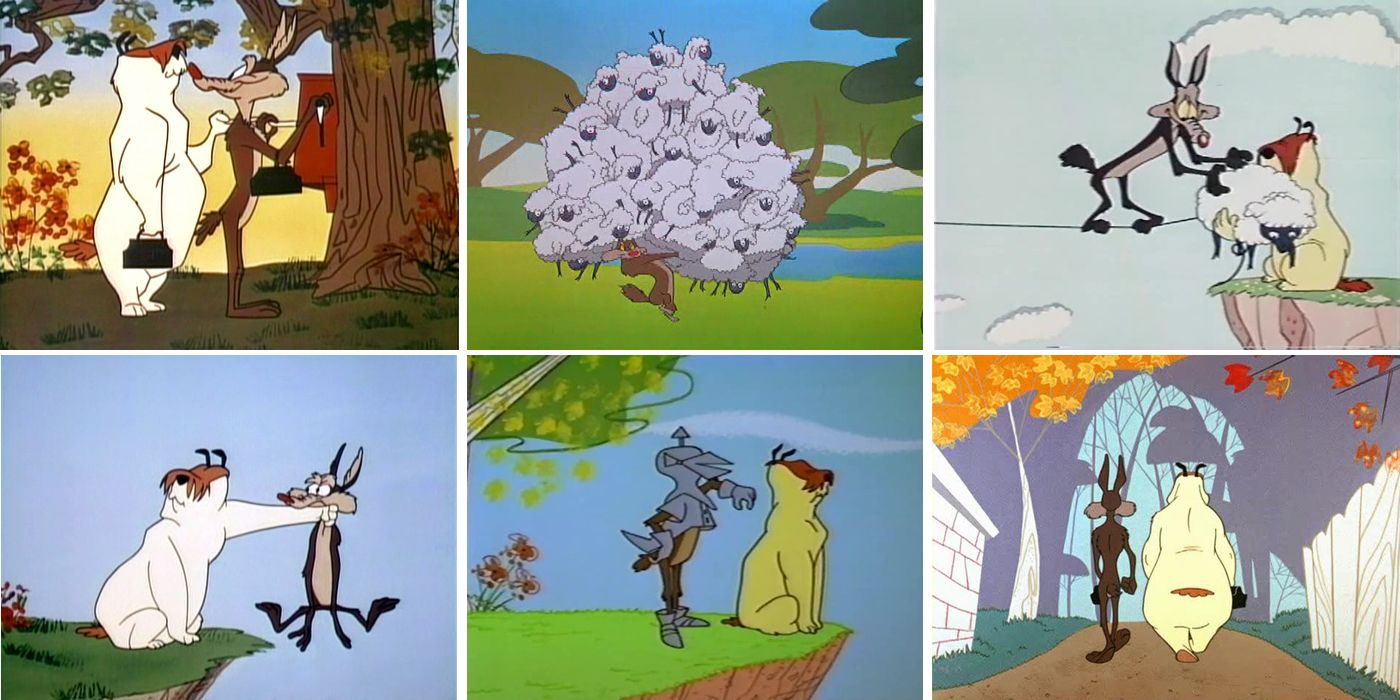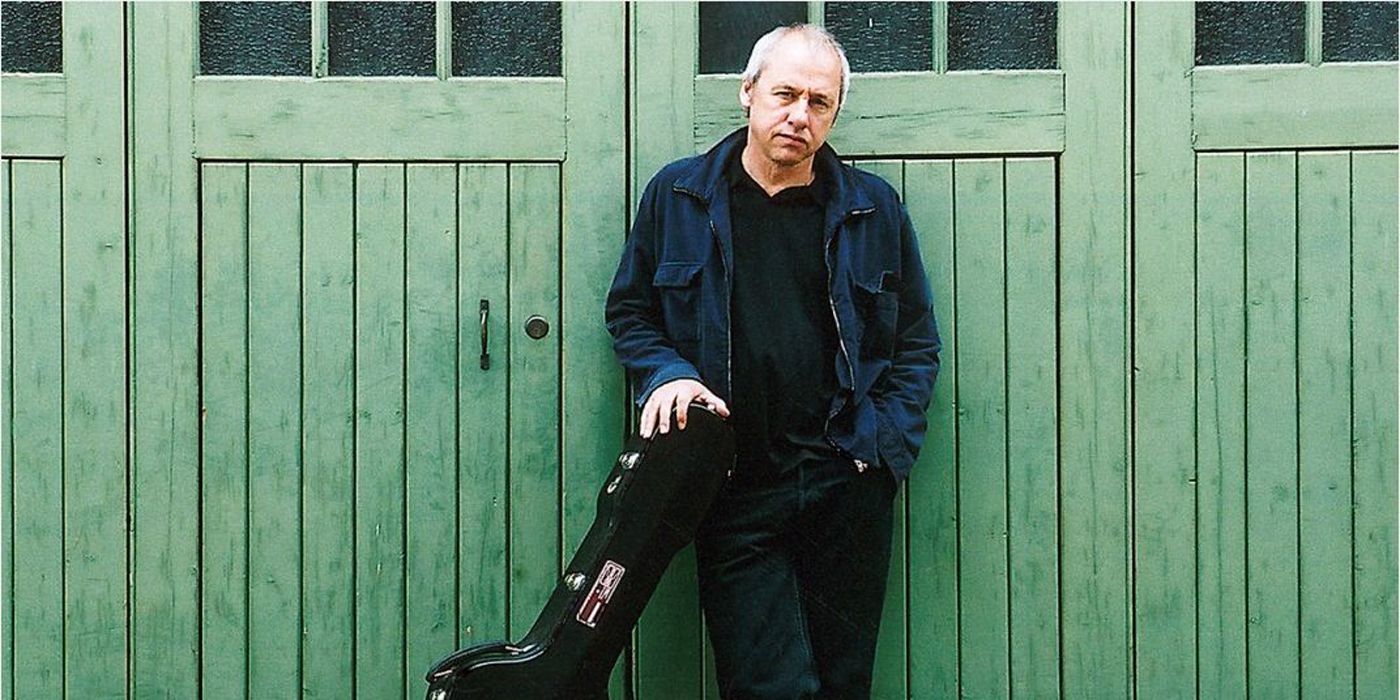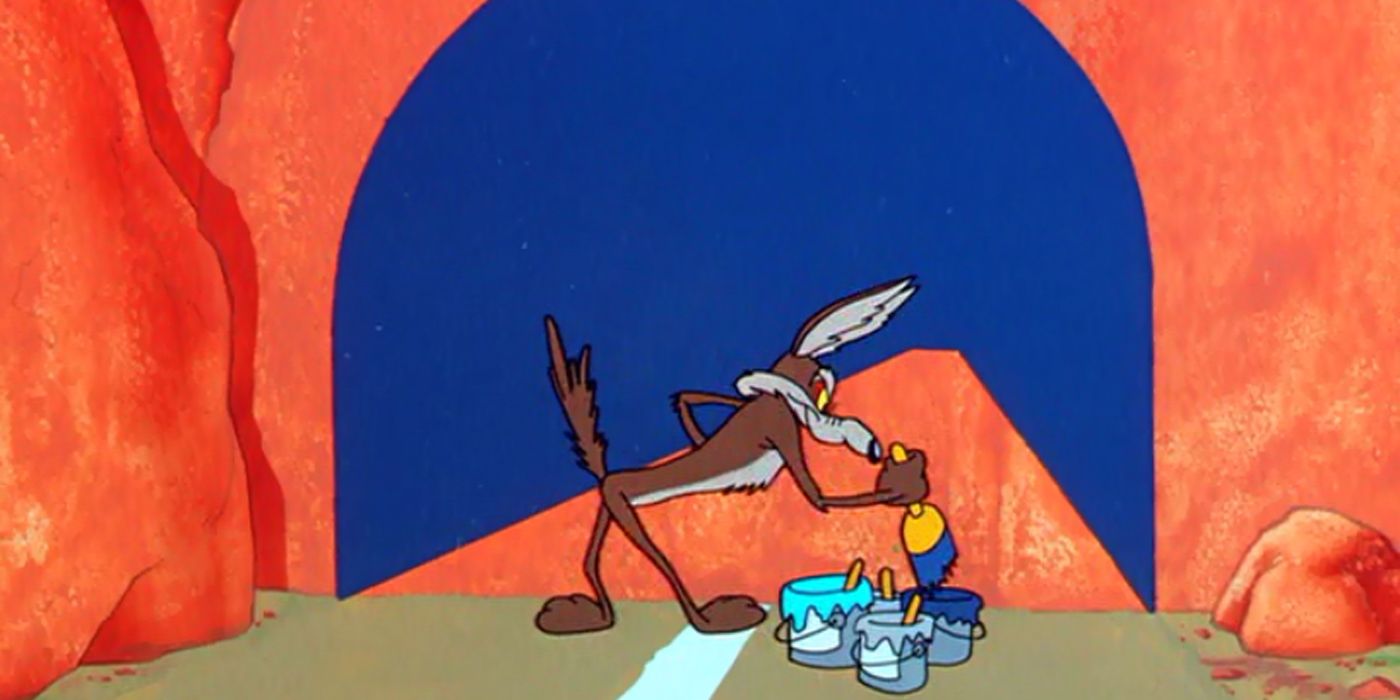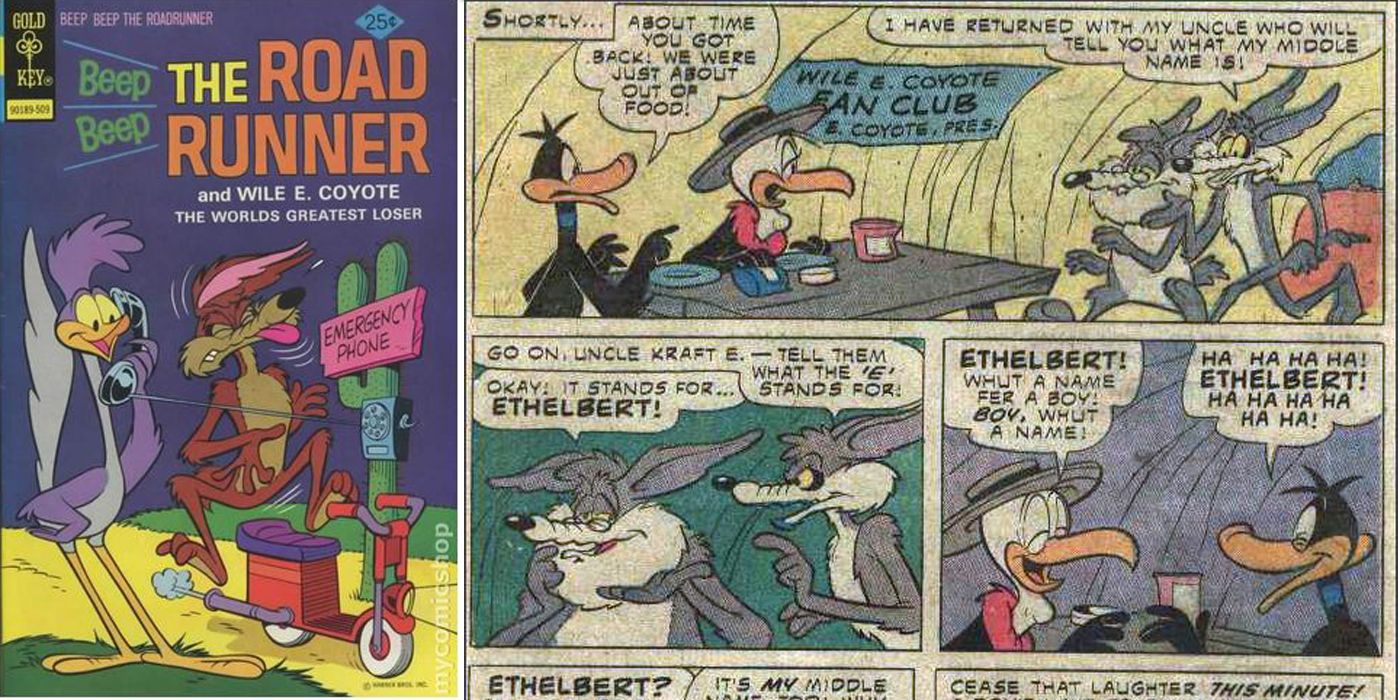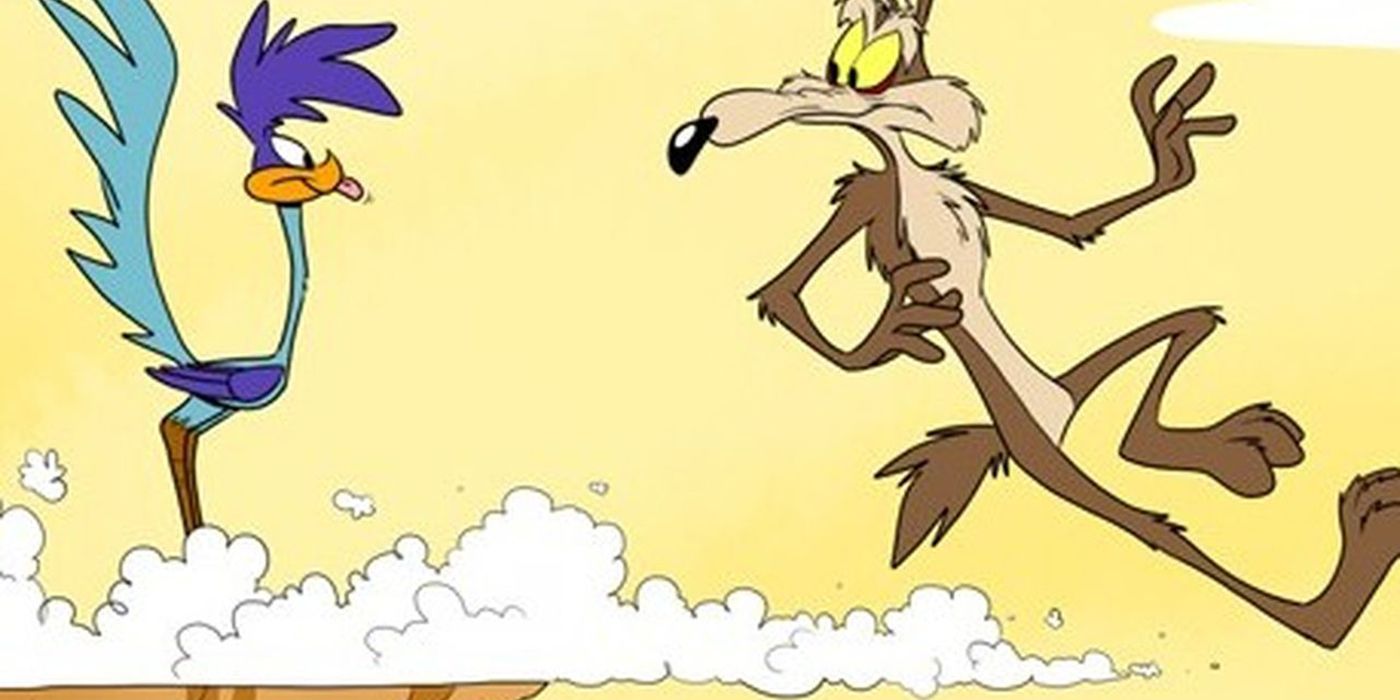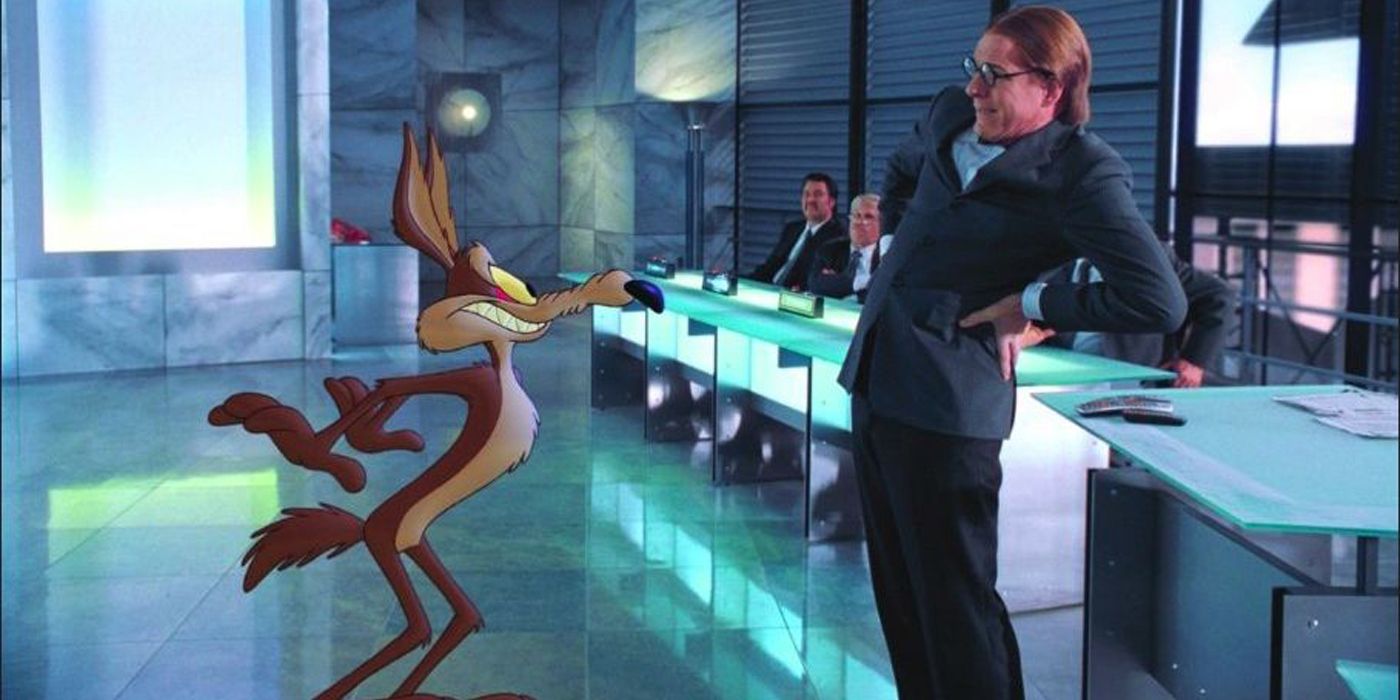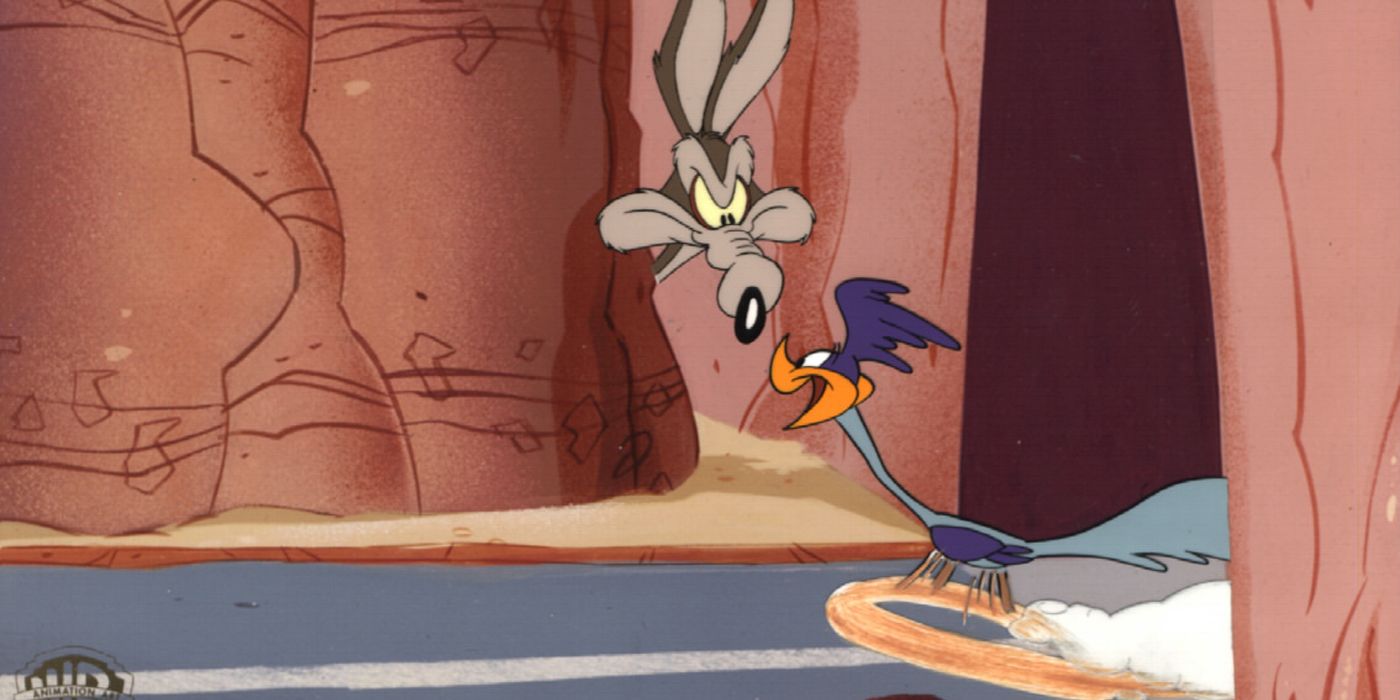Wile E. Coyote, genius. That's how he's always billed himself, and in some ways, he deserves the credit. Who else would think of such elaborate schemes to get a great meal? Who else could draw up such complicated blueprints? Does it matter that all of his schemes failed? It may have left him perpetually hungry, but it doesn't change his status as one of the most creative and undaunted coyotes around.
While many different people contributed to him over the years, the Coyote (and his foil, the Road Runner) were creations of animation genius Chuck Jones. The characters premiered in their first cartoon, The Fast and the Furry-ous, in 1949, and soon became a staple of the Looney Tunes/Merrie Melodies catalogue. With brilliant music by Carl Stalling and help from a talented group of artists, Wile E. Coyote became an intriguing and sometimes inspiring character for millions. His stamina and perseverance were put to the test as he made his way through failed Acme contraptions, tall cliffs, winding roads, and some very inconsistent laws of physics. He had our sympathy; we wanted him to catch that smug Road Runner and eat him. And most of all, he was funny. Chuck Jones had been a child extra in movies directed by slapstick king Mac Sennett, where he learned to appreciate the art of the gag, so he brought all of that, plus some heart, plus some intelligence, to the character of Wile E. Coyote.
For those of us who grew up with The Bugs Bunny Road Runner Show, and all of its incarnations thereafter, here are 15 Things You (Probably) Didn't Know About Wile E. Coyote.
15. The Character Was Inspired By Mark Twain
There’s a reason that early Looney Tunes/Merrie Melodies cartoons really stand out in terms of depth and quality. They may look like a series of endless sight gags, but there’s always something more going on beneath the surface.
When Jones was creating Wile E. Coyote in 1948, he found inspiration in the writings of Mark Twain, best known for The Adventures of Tom Sawyer and Huckleberry Finn. In 1872’s Roughing It, Twain describes the coyote as “long, slim, sick and sorry-looking skeleton.” He says the coyote is “… a living, breathing allegory of Want. He is always hungry. He is always poor, out of luck, and friendless.”
Jones read this description at age seven, and never forgot it. He said that no one ever saw the coyote more clearly than Twain. But he put a little of himself into Wile E., too. Like the Coyote, Jones often injured himself with the tools he was using and was something of a failure at home improvement, so he used that to add a little comedy to the creature Twain found so tragic.
14. The Look Of The Coyote’s Tail Was Inspired By Japanese Paintings
Jones put a lot of thought into how the Coyote should look. He had already broken from animal reality by making him bipedal, but to that he added some key details.
He made the Coyote look proud but ragged; he stands tall and has a strong face, but his ears look “a little bit broken.” To make him look hungry, Jones gave him a little pot belly, and over the years, he added to the ragged look by drawing one knee a little higher than the other. He often gave him an extra toenail, as well, so he’d look unkempt.
The tail, though, was influenced by Japanese paintings of stormy oceans. Jones said, “If you have a boat hanging on top of a wave in a Japanese painting, you know it’s going to go over. These are waves to die on, not to surf on. The normal way to draw the tail of any animal, from a squirrel to a dog, is to make it round and soft like the Western waves; reversing this created the Coyote’s tail. It is the difference between concave curves and convex curves, between the cuddly and the ratty.”
So now we have Mark Twain and Japanese painters. On to some slightly less highbrow Coyote cohorts.
13. Wile E. Coyote Has Made A Lot Of Cameos
Most of us just think of him as a star of the Coyote & Road Runner cartoons, but Wile E. has made quite a few guest appearances on other shows, including ones outside his Looney Tunes home. Probably the most famous was 1988's Who Framed Roger Rabbit? starring Bob Hoskins, Christopher Lloyd, and a whole lot of cartoon characters. (This was eight years before Michael Jordan teamed up with Bugs Bunny in Space Jam.) Although the movie takes place in 1947, a few years before the Coyote and the Road Runner were created, they have two brief appearances in it anyway. We’ve read one source claiming this was at the insistence of director Robert Zemeckis, and another attributing it to producer Steven Spielberg, so we’re just going to call them both big fans and leave it at that.
The Coyote also appeared in an episode of Night Court¸in which he was found guilty of harassment and told to go to a restaurant or a grocery store if he was really that hungry. He’s been in two episodes of Family Guy, although he looks a lot less scrawny than originally drawn, and was glimpsed through a window by Scooby in What’s New, Scooby-Doo?. And he painted a fake couch for The Simpsons to crash into in the open of the Season 19 episode, “Smoke on the Daughter.”
And this is all in addition to popping up on more predictable fare like Space Jam, Tweety’s High-Flying Adventure, Bah Humduck!, and other Looney Tunes projects.
12. He’s Shilled For Multiple Companies
It’s not just movies & TV shows that have been enhanced by the presence of Wile E. Coyote. He’s done ads for soft drinks, cereal, batteries, and two different insurance companies. He and the Road Runner did an ad for Shell Oil, but like many celebrities, managed to keep that one off U.S. turf—it only aired in New Zealand. He co-starred with Deion Sanders in a Pepsi commercial, and the Cheerios Bee in an ad for Honey Nut Cheerios,
For Afflac, he shared the screen with Bugs, Daffy, and the Road Runner, and fell off a cliff with the Afflac duck. He tried (and failed, of course) to destroy the Energizer Bunny in a handful of commercials in the 1990s, and years later spent some time in the desert with the Geico gecko in a TV spot. He tried eating the gecko, but predictably, a large safe—made by Acme—fell on his head before he could do so.
11. Wile E. Coyote Is Not Always Silent
In a typical Road Runner & Coyote cartoon, the Roadrunner says "meep-meep!" (or “beep beep”; both are accepted) with regular frequency and the Coyote remains silent. He holds up signs if he has something to say, but is otherwise mute. But between 1952 and 1963, he got hungry for something a little different: rabbit. He appeared in five Bugs Bunny cartoons, introducing himself to Bugs as Wile E. Coyote, Genius, and didn't STOP talking. He had a refined, almost faux-English accent, and had a great deal to say about how Bugs shouldn't even waste his time trying to escape his fate as Wile E.'s dinner, because he didn't stand a chance. Of course our the more pedestrian-sounding Bugs outsmarted him every single time. These shorts gave a fun new dimension to the character, in addition to some new Acme devices, and showed us that he had a broader palate than had been previously defined.
Just because nothing is ever simple, especially cartoon characters, there's one 1963 Bugs Bunny cartoon, "Hare-Breadth Hurry,” in which the Coyote doesn't say a thing, and one short with the Road Runner called “Zoom At The Top,” (1962) in which he speaks one word: "Ouch."
10. His Biggest Enemy Is Not The Road Runner
In his autobiography, Chuck Amuck: The Life and Times of an Animated Cartoonist, Chuck Jones lists the nine rules that every Road Runner and Coyote cartoon had to follow. They include some obvious ones: there could never be any dialogue beyond the requisite “beep beep” from the Road Runner, the Road Runner must stay on the road, the action must all take place in the Southwest American desert, and the Coyote must always be more humiliated than actually harmed by his failures. . (In the world of cartoons, getting harmed is usually temporary, and recovery is quick.)
But Rule 8 teaches us that Wile E. Coyote’s biggest enemy should NOT be the Road Runner. Nor is it anvils, dynamite detonators, flying suits, or jet-powered roller skates. His biggest enemy “whenever possible,” is gravity. What’s interesting about gravity in the Coyote’s world is that it doesn’t seem to become a threat to him until he notices it, which is why we have that now-classic cliché in which he doesn’t start to fall until he realizes he’s no longer standing on the cliff.
9. Coyotes Do Actually Eat Roadrunners
Real coyotes get described, even without Mark Twain’s help, as cunning and sneaky, but a little research tells us that the reason they have that reputation is because they’re actually pretty smart. They’re extremely adaptable, managing to live and thrive in both snowy mountain ranges and vast empty deserts. They’ve often been known to make their way into small towns and big cities, too, throughout both North and South America. It’s in deserts, though, where they share an environment with roadrunners.
But do they eat them? Yes. Really, a coyote will eat practically anything, from fruit and vegetables to rodents, chickens, and even family pets. They eat eggs, frogs, snakes, insects, mice, and rabbits too, and sometimes even team up with other coyotes or badgers to help conquer their prey. Do they chase roadrunners? Yes! How else are they supposed to catch them? They have sharp teeth and claws, and will stalk a roadrunner (or other prey) silently, then surprise their intended victims by leaping into the air and landing on them with their front paws.
8. Wile E. Coyote Has A Doppelganger
Starting in 1953, a set of cartoon shorts started appearing starring two new characters, Sam Sheepdog and Ralph Wolf. Most of these shorts take place in the space of one work day. At the beginning, Ralph and Sam greet each other and punch into the same time clock after some nice chit-chat. At that point, they get to work. Sam’s job is to guard a herd of particularly helpless sheep, and Ralph’s job is to try to steal them so he can eat them. The main joke of this set of cartoons is that Sam is often sleeping or just sitting passively near the sheep while Ralph concocts and stages elaborate, Wile E. Coyote-like plans - and yet Sam always manages to foil him at the last minute, and with minimal effort. At the end of the day, they punch out together at the time clock, and exchange pleasantries again. Both characters were voiced by the brilliant Mel Blanc.
The reason Ralph Wolf looks so familiar is that Chuck Jones used the Coyote's character design to create him. There are a few slight differences: Ralph has a red nose instead of a black one, his eyes are white instead of yellow, and sometimes he has a fang. He also lacks Wile E.’s fanaticism, proven by the fact that once he clocks out for the day, he forgets all about the sheep and moves on to more leisurely pursuits. One thing they do have in common, however, is the frequent use of products from the Acme Corporation, as well as an appetite for doing things the hard way.
7. There's A Tribute Out There To The Acme Corporation
Per Chuck Jones’ rule #7, all "tools, weapons, or mechanical conveniences" used by Wile E. Coyote must be obtained from the Acme Corporation. There’s been a lot of speculation about its name, but Jones himself cleared up the mystery in a 2009 documentary, in which he explained that they used the name because there were so many different companies, in multiple industries, called Acme. The reason for that was simple; Acme was listed first in the yellow pages. Another inspiration may have come from the fact that during the time these cartoons were being made, traffic light in Los Angeles, where they worked, were products of the Acme Traffic Signal Company. You could sometimes see versions of these clanging, semaphore-armed signals in various Looney Tunes and Merrie Melodies cartoons.
An artist named Rob Loukotka was so inspired by the devices sold to Wile E. Coyote by the Acme Corporation that he has drawn every single product ever seen in the cartoons. For purity’s sake, he limited himself to the original shorts only, ones that ran from 1949 to 1994. He did a series on different groups of Acme products, then created one giant poster of all of them together, offering it up for sale on Kickstarter in 2012. They sold out. He took on the project again a few years later as part of his “Famous Desks” series, titling his new work of art “The Desk of Mr. Coyote.”
6. Wile E. Coyote Has Inspired Songs
It’s not just artists who feel the Coyote love. Mark Knopfler, best known as the co-founder of the band Dire Straits, has a song on his 2002 solo album The Ragpicker’s Dream, which includes the song “Coyote.”
Once again the roadrunner
Leaves the coyote in the dirt
You've got another plan of action
But we all know it ain't never gonna work
It must be hard having dog dreams
That never come true
And don't you just wish that you could
Make half of the speed I do
Folk song parodist Tom Smith wrote an entire song from the Coyote’s point of view called “Operation : Desert Storm.”
If Murphy's Laws are religion, I must be a saint.
What else explains semis bursting from tunnels I paint?
A thousand Rube Goldberg nightmares lie smashed in my garage --
How many falling pianos can that damn bird dodge?
And Wile E. gets a shout-out from Kendrick Lamar and Gunplay in 2012’s “Cartoon & Cereal.”
You told me “Don’t be like me, just finish watching cartoons”
Which is funny now cause all I see is Wile E. Coyotes in the room
For the record, the song also includes a little Bugs Bunny tribute by asking, “What’s up, doc?”
5. There Is A Series Of Cartoons In Which He Doesn't Get Hurt
We all know the way a Coyote-Road Runner cartoon is supposed to work. Coyote sets trap. Roadrunner foils Coyote. Coyote gets hurt by the very thing he set up. He's been hit by anvils, blown up by dynamite, dropped from greater heights, squished by rocks, hit by trains, and much more. But in the 1970s, Chuck Jones created some new cartoons specifically for the hit kids' show The Electric Company. For those who remember, The Electric Company was a gem that was sort of like Sesame Street, but for older, groovier kids. It starred Oscar winners Morgan Freeman and Rita Moreno, among others.
Jones created a series of cartoons meant to teach kids vocabulary. While it wasn't uncommon to see the two characters hold up signs during their regular cartoons, these were different: while they taught words, and there was a chase, Wile E. Coyote never got hurt. As far as we know, these are the only cartoons he starred in that can make such a claim.
4. Wile E.'s Middle Name Is The Subject Of Dispute
The Coyote was never supposed to have a middle name. Originally but briefly named Don Coyote (as a play on Don Quixote), he quickly became Wile E. because he was... duh... wily. For years he went by this name, and occasionally people wondered if the "E" stood for anything. Apparently, so did he. In a 1975 issue of the Looney Tunes & Merrie Melodies Comics series “Beep Beep The Road Runner,” he becomes so interested in his middle name that he starts gathering up coyote relatives who might know. His uncle, Kraft E. Coyote, is the one to spill the beans and tell him that his middle name is Ethelbert.
The comic book writer never meant for this to become canon, but it caught on, and there are now over a thousand websites claiming that this is his official name. In January of 2007, It even became a Final Jeopardy question on Jeopardy!.
So is it really his middle name? Does it count if it’s only mentioned once, in a comic book, but the comic book was an official release? Is it possible that Kraft E. Coyote was just messing with Wile E.? No comment.
3. Wile E. Coyote Received An Homage In The Matrix
The movie The Matrix was a 1999 blockbuster hit about a dystopian future in which the reality humans believe they’re living in is really a simulation, created by sentient machines who are using the humans’ heat and electrical activity as an energy source. It may have a heady premise, but it’s also an action movie at its core, with its heroes and villains able to manipulate their simulated reality and bend the laws of physics.
The movie boasts some pretty highbrow influences, among them Descartes, Plato, Jean Baudrillard, and Immanuel Kant. But the Wachowskis, who wrote and directed the film, have admitted that not all of their inspiration came from such lofty places. The truth was revealed on the DVD release of the movie, which included commentary from the visual effects supervisor and the editor, as well as some others.
When Neo (Keanu Reeves) is training with Morpheus (Laurence Fishburne), one of the things he has to learn is how to jump from great heights without being injured. The scene as it appears was actually done as an homage to the great Wile E. Coyote, who also managed to fall great distances, survive it, defy the laws of physics, and move on to his next activity.
2. There's A Reason He Can Afford All That Stuff From Acme
There's one question that has stymied some literal-minded viewers who watched all those cartoons: how on earth did the Coyote afford all those devices he bought from the Acme Corporation? He didn't seem to have a job--being a super genius doesn't count--but he had an endless supply of mail-order products arriving on his doorstep.
The answer didn't come until 2003. In the movie Looney Tunes: Back In Action, it is revealed to the world that Wile E. Coyote is actually an EMPLOYEE of Acme. Not only that, his boss is Steve Martin with a weird wig.
Anyone who’d kept up with Tiny Tune Adventures on TV, though, knows that he has a protégé named Calamity Coyote, who seems to have an unlimited credit with Acme, so it’s possible he was using his connection. There’s also a Cartoon Network promo out there in which he reveals (via holding up a sign) the reason he keeps buying from Acme even though their products repeatedly fail him is that he has a good line of credit.
That hasn’t stopped fans from speculating that he’s actually an Acme Corporation beta tester, though.
1. Wile E. Coyote Does, In Fact, Capture The Roadrunner. Once.
In the great mythology of Wile E. Coyote, it’s fundamental to his character and his life that he is always trying to catch the Road Runner, but never succeeds. And yet, there is one cartoon – just ONE – in which he finally does it. Of course, it’s not the quite the rich reward he’s been hoping for.
In 1980’s “Soup or Sonic,” a part of the TV special Bugs Bunny’s Bustin’ Out All Over, Wile E. Coyote chases the Road Runner through a series of connected pipes. The pipes get smaller and smaller, so when the two of them pop out from the other end, they are tiny. When they realize their predicament, they agree (without speaking) to go back through the pipe and return to their normal size.
Off they go, zooming through the pipes as they get progressively larger. The Road Runner comes out first, his size restored, but when the Coyote emerges, he is still tiny. It takes him a minute to catch on, as it so often does, so he runs up to the Road Runner and throws himself at him, wrapping his entire body around one of the Road Runner’s legs. Thrilled, he pulls out a knife and fork to begin the feast, and only then does he look up and realize that the Road Runner is now massive compared to himself. At the very end of the cartoon, he holds up a sign to the audience:
“Okay, wise guys, you always wanted me to catch him. Now what do I do?”

